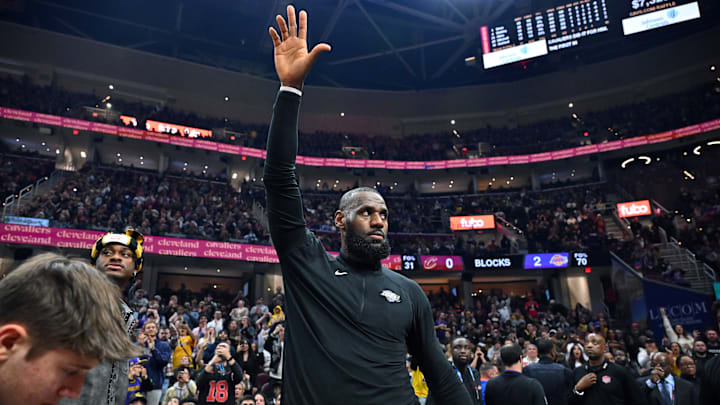LeBron James’ dominance against the Toronto Raptors, Atlanta Hawks and Indiana Pacers has tattooed bad memories into DeMar DeRozan and Jeff Teague’s minds.
Both seemed to agree that he was a superior player in his second stint in Wine and Gold than the Miami Heat. Keep in mind, DeRozan’s Raptors got swept twice and Teague’s group thrice by the James-led Cavaliers.
Are they right? Regardless, it’s worth investigating because James had a Hall-of-Fame-worthy career in both stops.
In Miami, LeBron was at his peak physically but not mentally, next to Dwyane Wade and Chris Bosh. Additionally, he was one of the most devastating open-court and vertical threats ever.
These moments encapsulate his demigod status best: Wade flicked a pass from the left side and James, cut from the opposite baseline, jumped over 5-foot-11 John Lucas III, slamming it one-handed. And nearly hitting his head on the backboard after finishing an alley-oop from Wade on Christmas Day. And the fastbreak lob from Mario Chalmers to James, finished with Jrue Holiday on his back hip.
Yet, he didn’t start winning until his second year in South Beach. His first campaign ended in humiliation with a loss to the Dallas Mavericks. It’s usually one of the first strikes his detractors use against him when debating his legacy. The Mavs’ schemes prevented him from putting pressure on the rim, causing a disappearing act.
He’s never looked as bad since. The wounds of embarrassment are the best teacher.
LeBron starts his Miami dynasty
Back-to-back MVP crowns and championships followed. James was other-worldly in Game 6 at Boston in the 2012 Eastern Conference Finals and the fourth quarter of Game 6 of the 2013 NBA championship round. In the former, he wiped out the old Celtics to keep the team alive for a seventh match. He scored double-digits late in the latter, too, leading the Heat back from a compromising position. Without his efforts against the San Antonio Spurs, there is no Ray Allen shot to tie.
On top of that, James was the bus driver for a team that won 27 consecutive games, the second most in NBA history in one season. Notably, the 24th straight victory included a 27-point comeback against the Cavaliers in Cleveland. This was a match Irving didn’t play because of a shoulder injury.
With the Heat, James had his two best seasons in the effective field goal percentage department and his most efficient year converting two-pointers (2014, 62.2 percent). Furthermore, his top true shooting percentage in the Playoffs was in his last ride with the Heat (2013-14).
The focus was unleashing him as the scorer as Wade aged. He was unstoppable on the drive from above or below. He shot 40.5% on jumpers and had his best mid range shooting season in 2011-12 (48.1). His post-game was effective. And he could guard four positions well and five if the opponent went small.
James’ versatility was on display when he got time checking point guards Tony Parker in the 2013 Finals and Derrick Rose in the 2011 ECF.
So why did he leave? He didn’t think Wade had the juice anymore and wasn’t wrong. By the end of 2013-14, Flash (Wade) was far from a memory. The man wearing his jersey couldn’t stay on the floor and had lost multiple steps. His lack of a 3-point shot meant his game would decline faster than ever.
Also, it bothered James greatly that sometimes he’d learn from the press instead of the Heat that Toney Douglas or whoever would start in Wade’s place.
